On October 6, Hanoi’s "Cultural Festival for Peace" began at Ly Thai To Park, celebrating the 70th anniversary of the capital's liberation and 25 years of being recognized as a UNESCO "City for Peace."
The festival featured more than 8,000 participants, including citizens and representatives from Hanoi’s 30 districts, who joined in a grand reenactment and cultural performances around Hoan Kiem Lake.
The opening ceremony began at 7 a.m. with a solemn incense offering at the Ly Thai To statue garden, honoring the great contributions of ancestors in defending and building the capital.
The highlight of the event was the large-scale live reenactment of the historic moment when Vietnamese troops entered Hanoi on October 10, 1954, following the end of the First Indochina War.
The reenactment featured nearly 1,000 soldiers and 200 performers, alongside 5,000 local residents, artists, and musicians who brought to life significant historical moments from Hanoi’s past.
Spectators were treated to performances depicting 60 days and nights of fierce fighting in the heart of the city, a powerful tribute to the heroism of the Vietnamese people during the French resistance.
The event also showcased Hanoi’s vibrant cultural heritage, featuring intangible cultural traditions recognized by both UNESCO and Vietnam.
These included folk performances such as senh tien dancing, Bài Bông dancing, Ải Lao martial arts, dragon dances, water puppetry, ca trù singing, and performances of traditional crafts.
The festival was divided into three parts: “Hanoi Memories,” “Heritage Flow,” and “Hanoi: City of Peace, City of Creativity.” Each segment delivered a unique message, celebrating Hanoi’s journey from its heroic past to its innovative present and its bright future as a cultural hub.
The event was not only a celebration of Hanoi’s history but also part of a broader strategy to promote the city’s cultural industries and tourism.
By highlighting Hanoi’s cultural traditions, the festival aimed to enhance the city’s reputation as a global center for cultural exchange, creativity, and sustainable development.
Prime Minister Pham Minh Chinh, Standing Member of the Secretariat Luong Cuong, and many other national and city leaders attended the festival, emphasizing its importance in Hanoi’s historical and cultural calendar.
The "Cultural Festival for Peace" is set to continue as a key annual event, fostering cultural exchange and strengthening Hanoi’s position as a historical, political, and economic center of Vietnam.
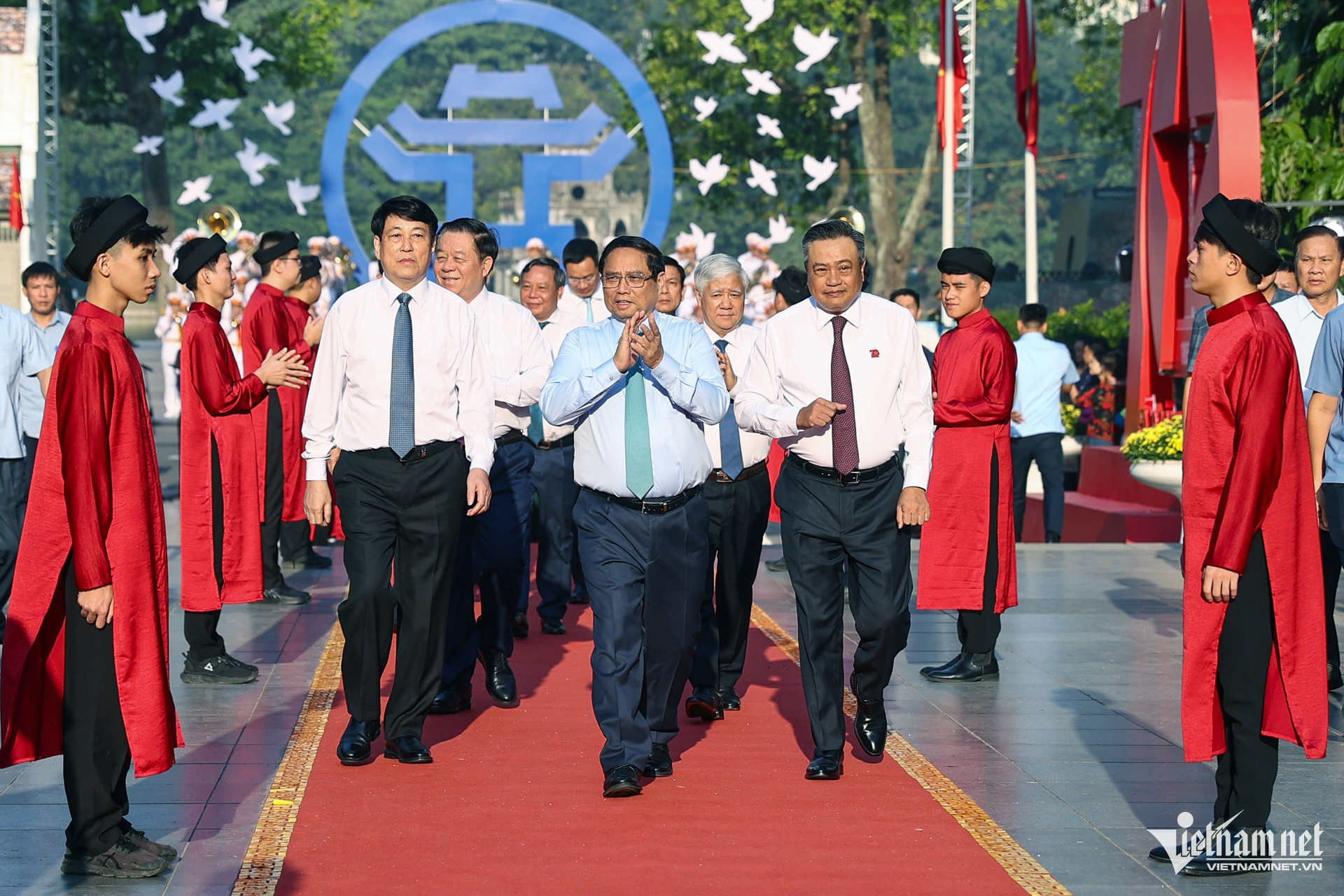
The festival was attended by Prime Minister Pham Minh Chinh, Permanent Secretary of the Party Central Committee Luong Cuong, and many leaders of the Party, the State, and Hanoi.
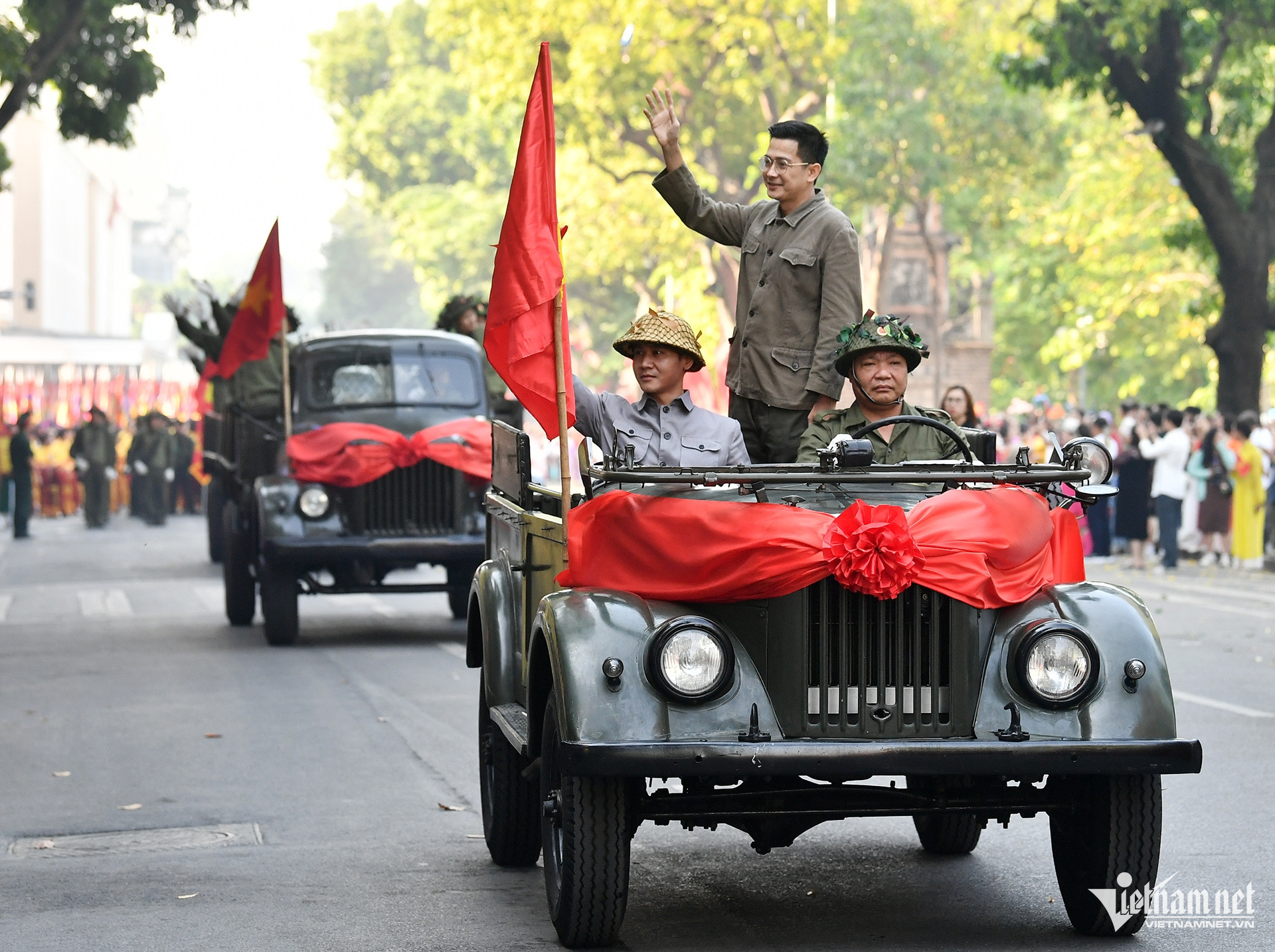
The opening ceremony took place at 7am on October 6, with a solemn incense offering at the King Ly Thai To Statue Park and around the Hoan Kiem Lake walking area to honor the great contributions of the ancestors in building and protecting the capital.
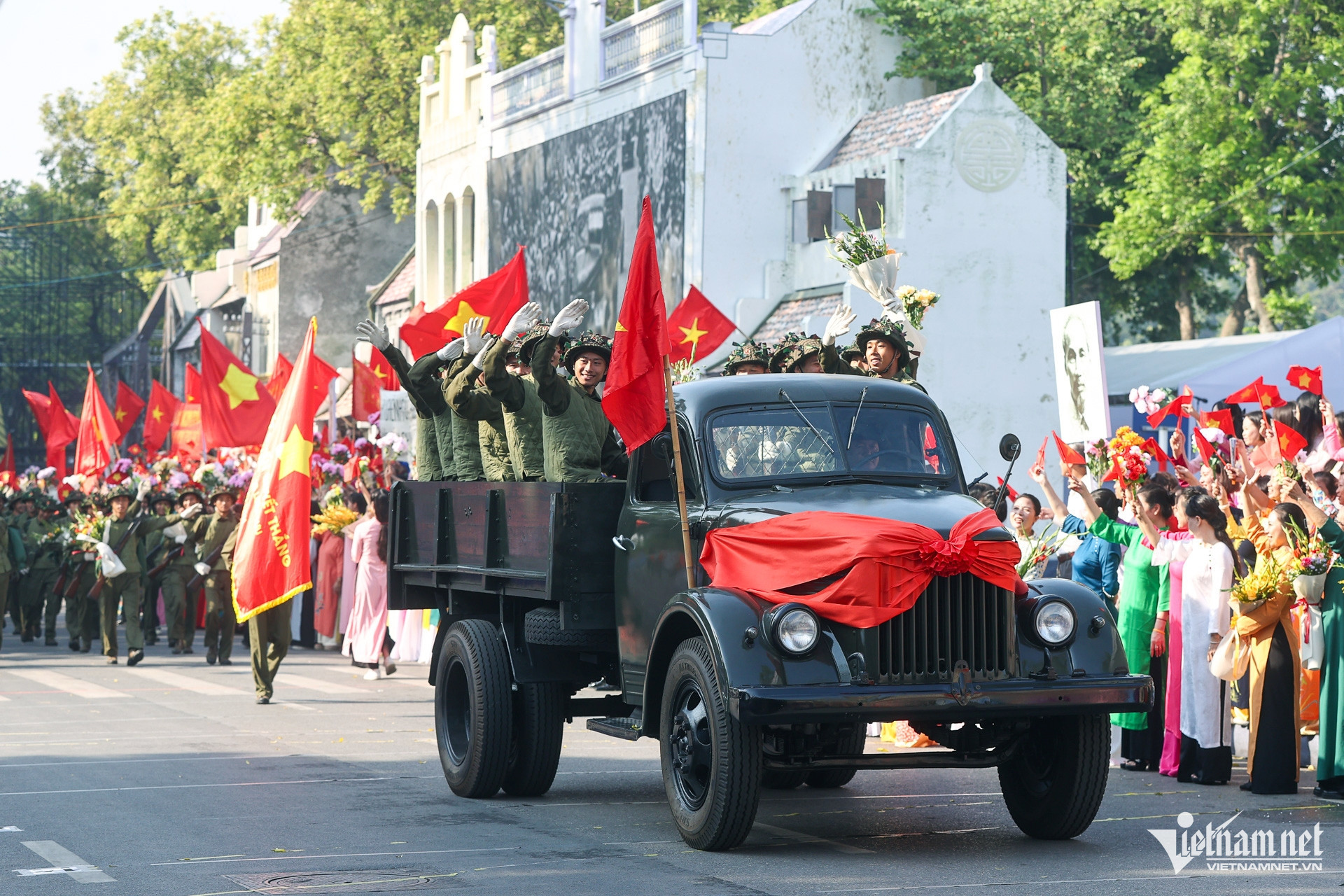
This event marks a major festival for Hanoi and is a key highlight among activities celebrating the 70th anniversary of the Capital's Liberation (October 10, 1954 - October 10, 2024) and the 25th anniversary of receiving the UNESCO "City for Peace" designation.
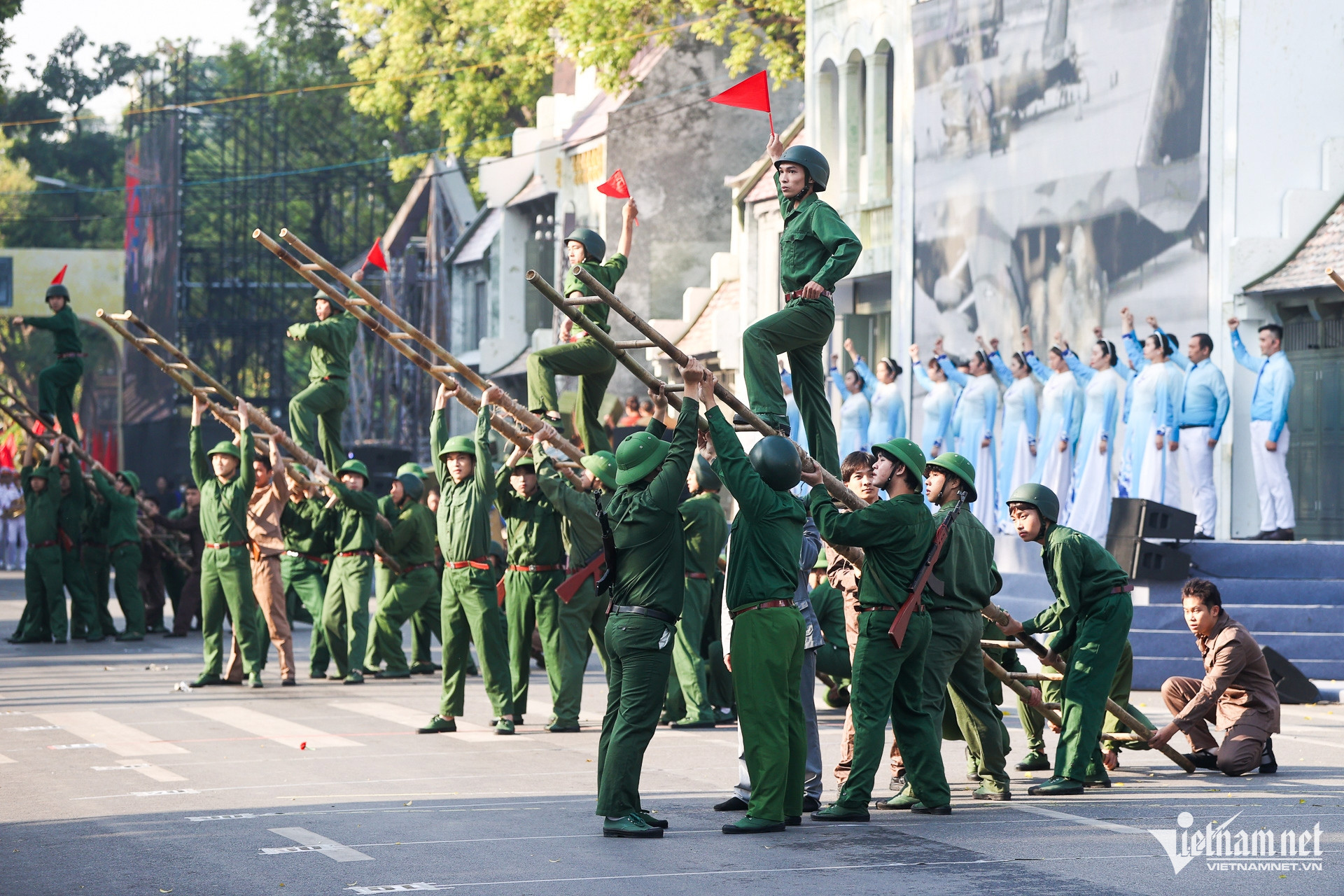
 |
 |
 |
 |
A standout feature of the event is the vivid reenactment of the 60-day-and-night battle in Hanoi, a heroic chapter at the beginning of the nation's resistance against French colonial rule.

The main stage was meticulously designed to recreate the image of the army marching into Hanoi on the historic day of October 10, 1954.
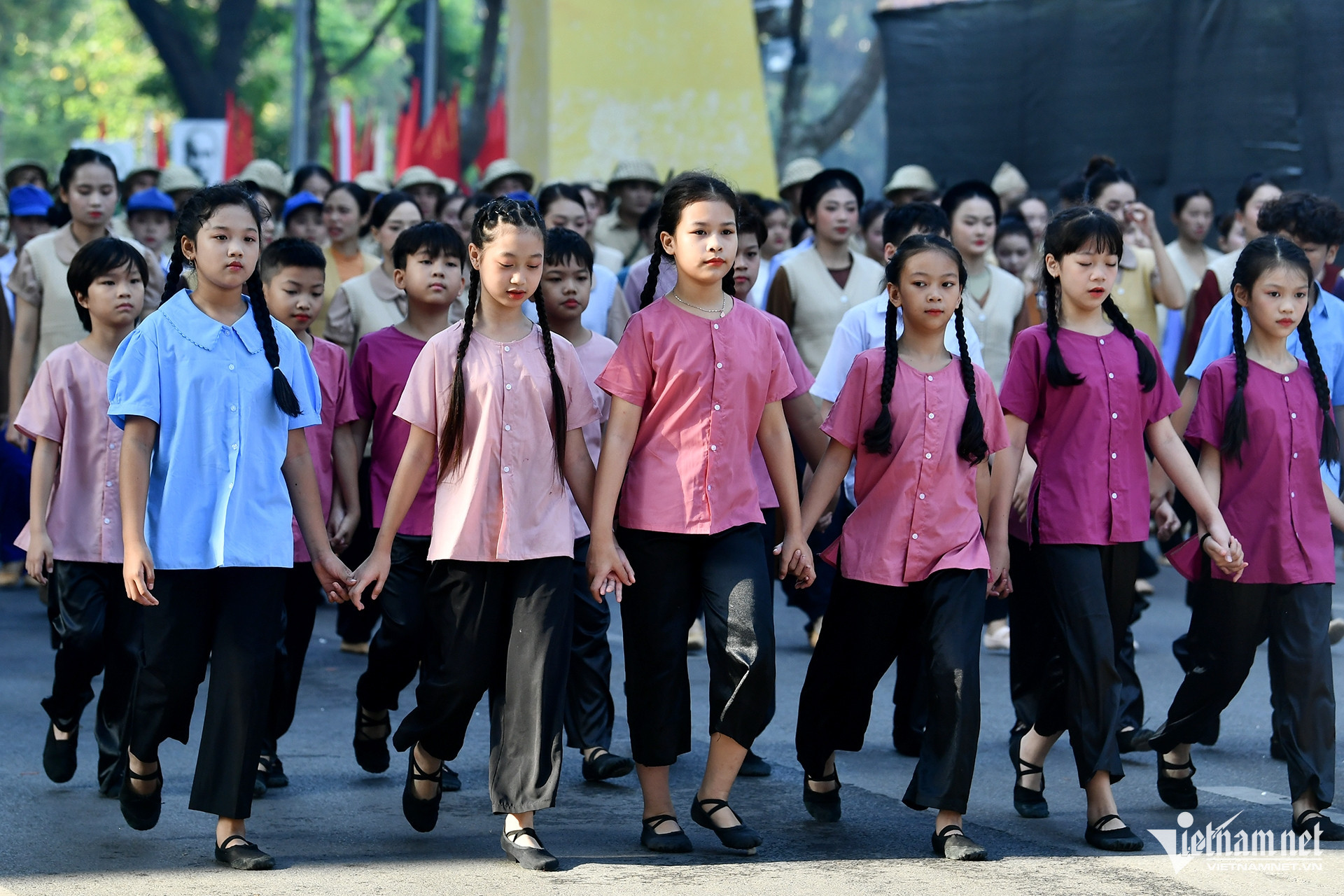
This glorious moment was portrayed through large-scale real-life performances involving nearly 1,000 soldiers and 200 artists and dancers.
 |
 |
The parade and performances included artisans and residents from 30 districts and towns, alongside artists, musicians, and various sectors of Hanoi's population, as well as international friends.
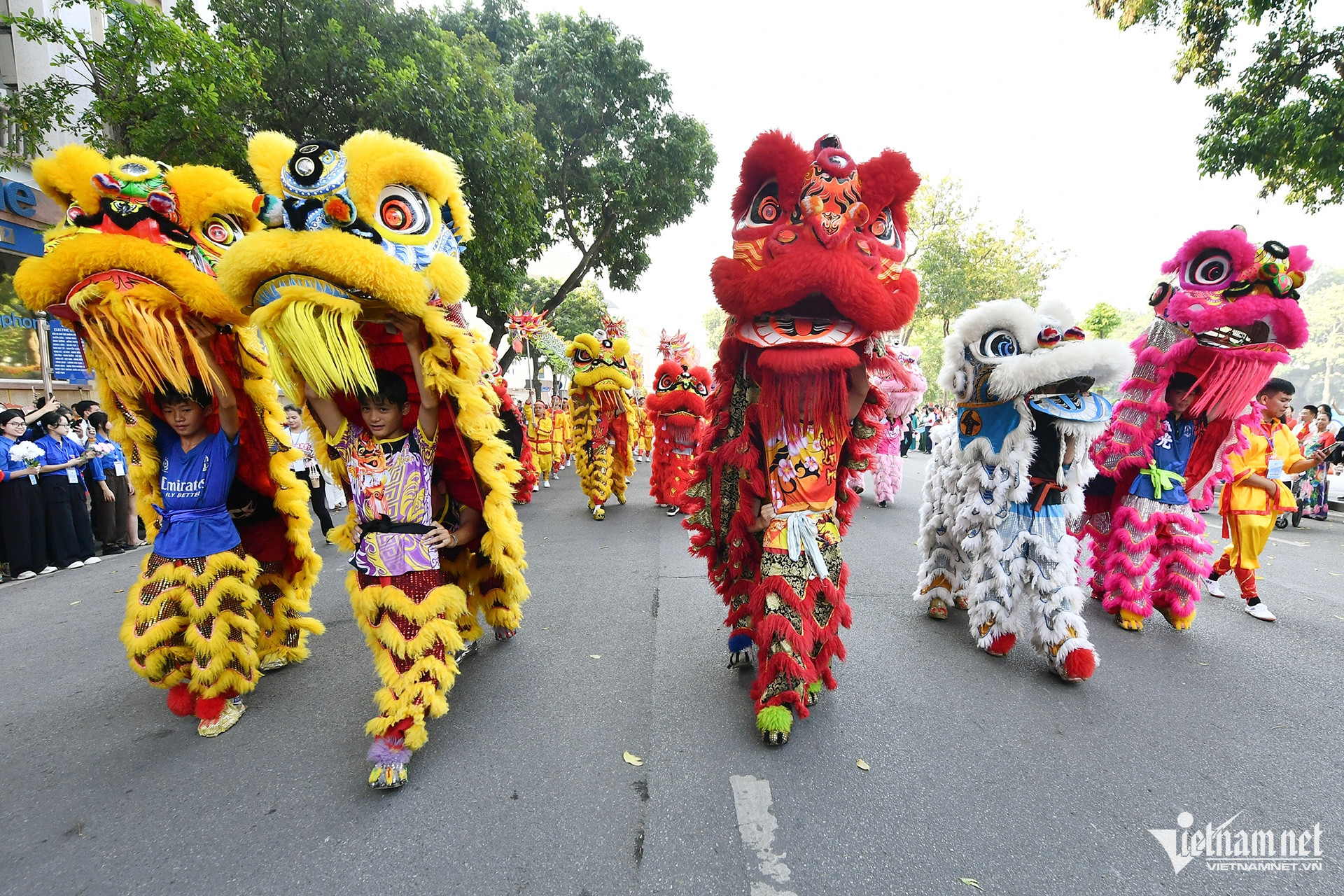
More than 8,000 participants, including 5,000 local residents and representatives of local forces, joined the parade to showcase distinctive traditional cultural and artistic forms.
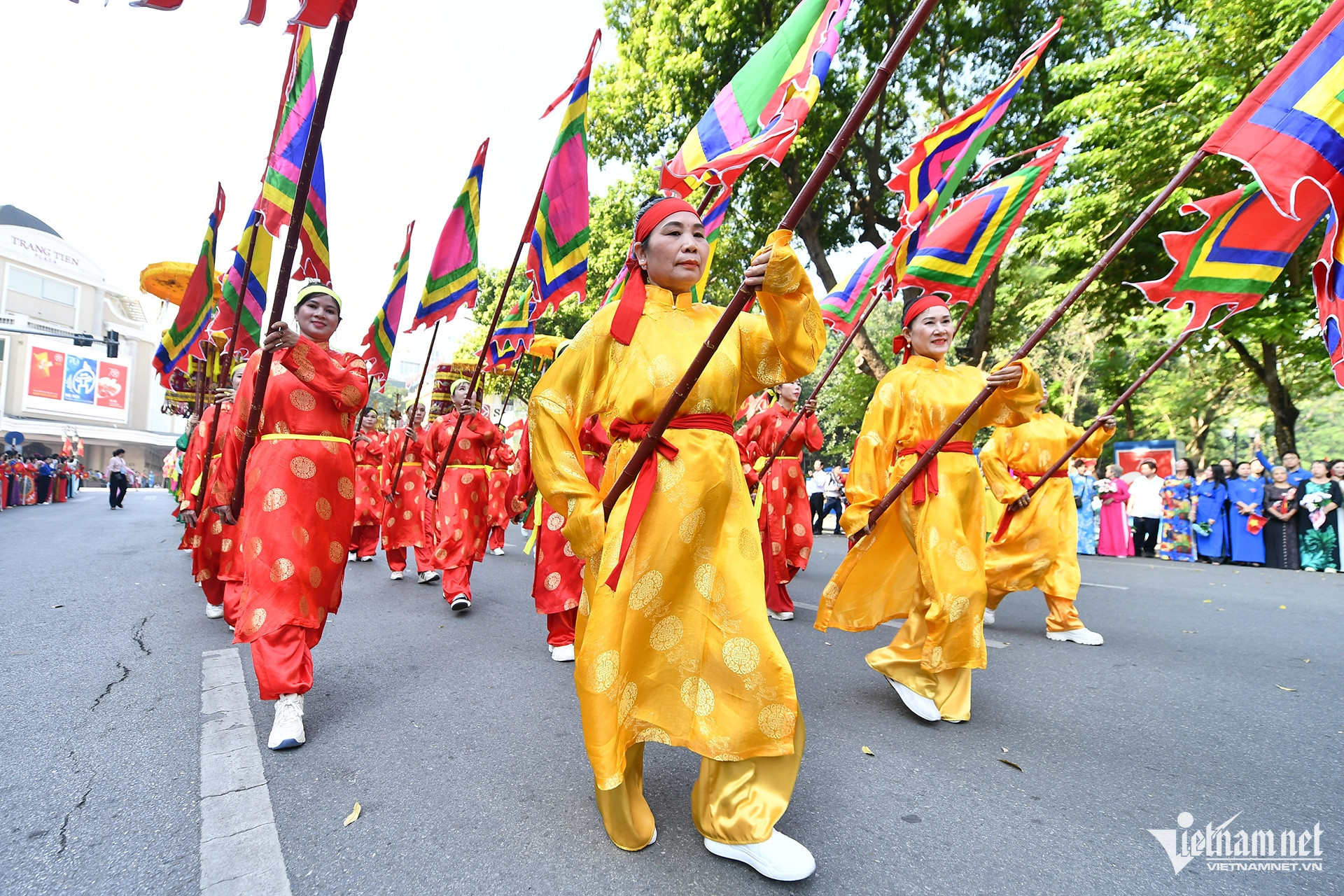
Spectators enjoyed intangible cultural heritage recognized by UNESCO and the nation, along with the traditional beauty of Hanoi’s culture, including Senh Tien dance, Bai Bong dance, Ai Lao, Gia Long dragon dance, Cheo Tau Tong Goi, Ca Tru, water puppetry, Xam singing, and heritage rituals such as the worship of Tan Vien Son Thanh, the Trung Sisters, and Saint Giong.
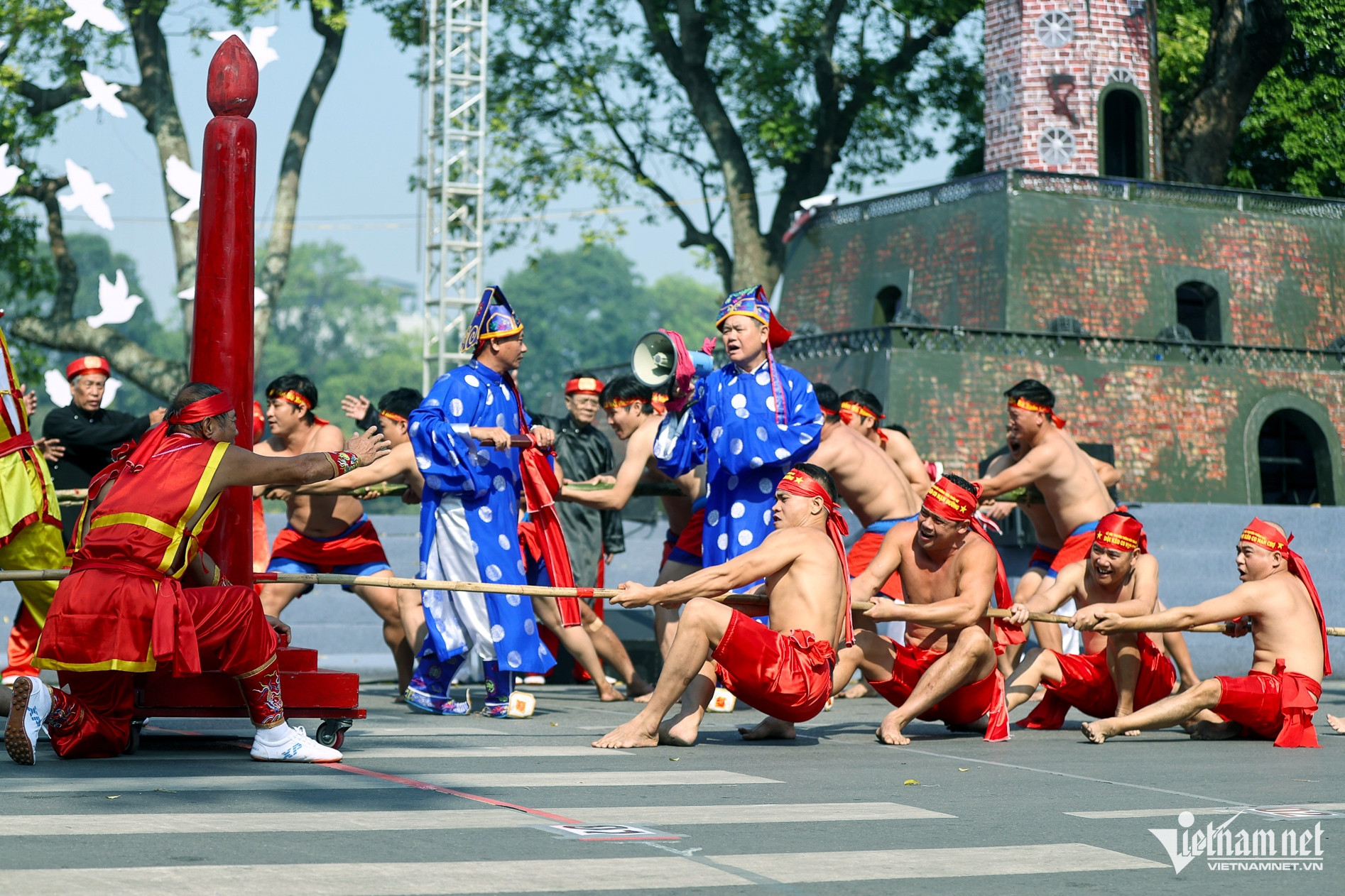
The program was divided into three main parts: Hanoi Memories, The Flow of Heritage, and Hanoi: City for Peace, Creative City.
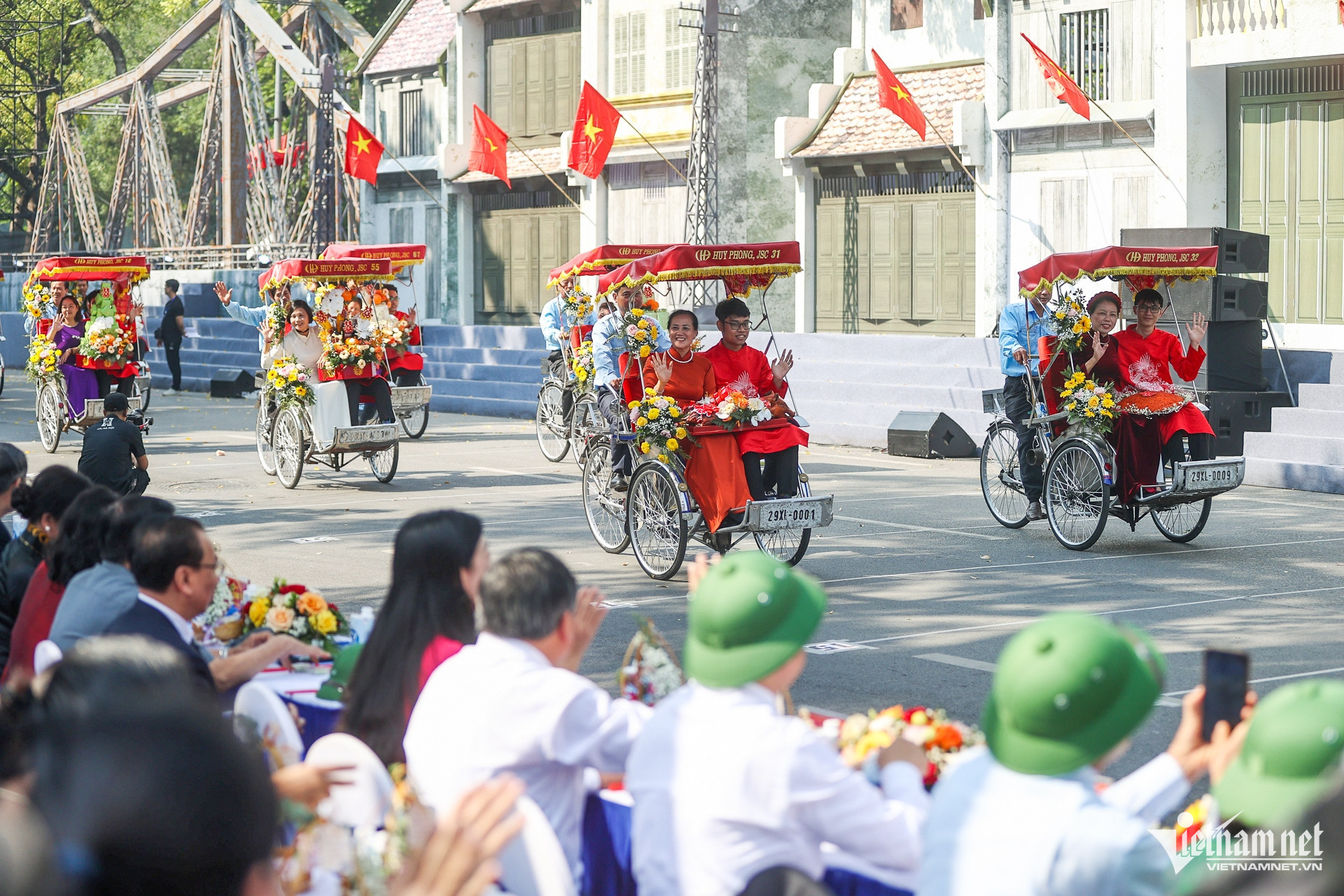
Each part carried a unique message, contributing to a panoramic view of Hanoi through various historical periods, from its glorious past to its dynamic present and bright future.

The "Cultural Festival for Peace" spreads the historical and cultural values of the capital to the nation and international friends. It is not only an opportunity for Hanoi to affirm its position as a city of history and culture but also as an important tourism, economic, and political hub of the country.
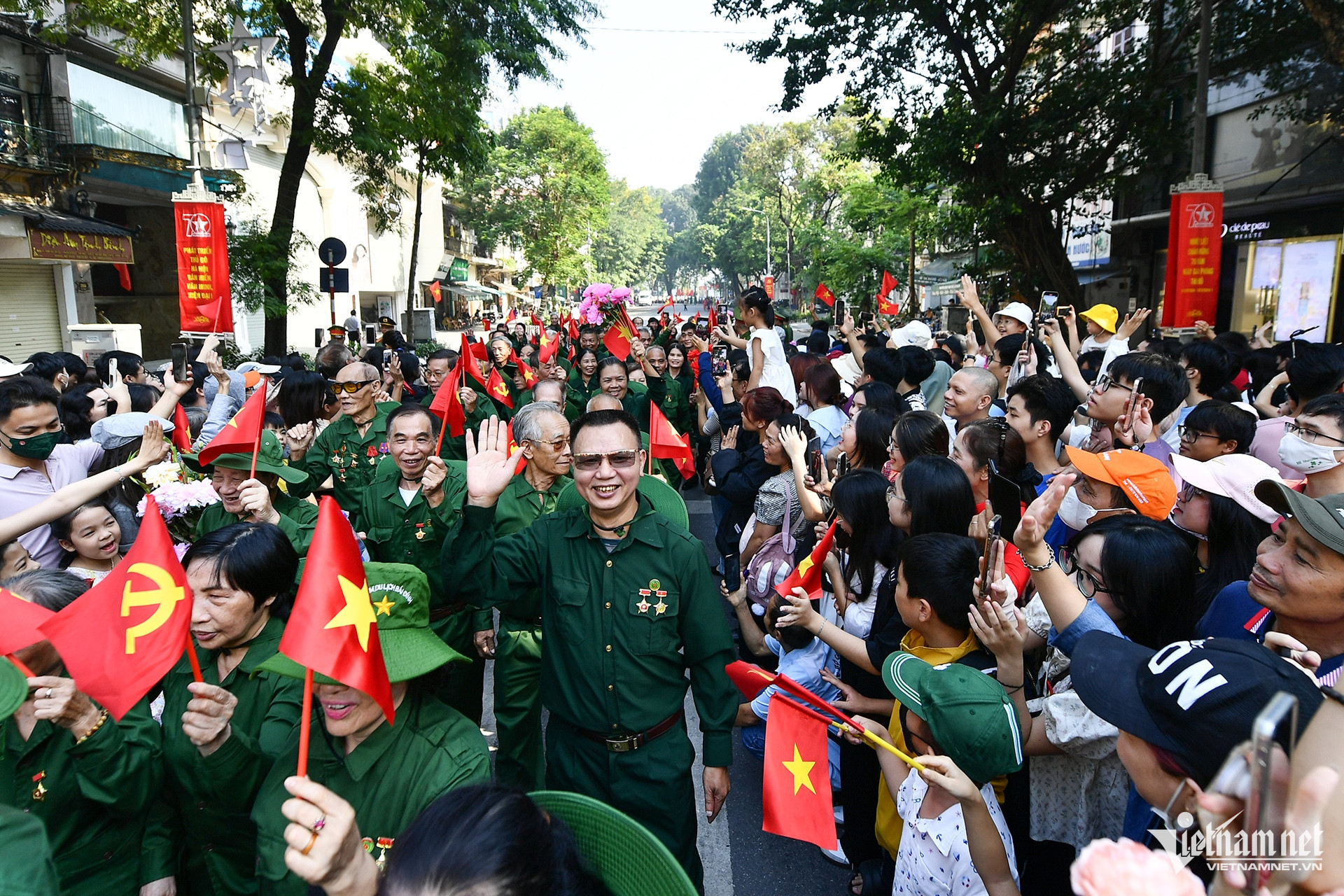
This event is also part of a strategy to develop cultural industry products, contributing to the promotion of cultural tourism and sustainable economic development for the capital.
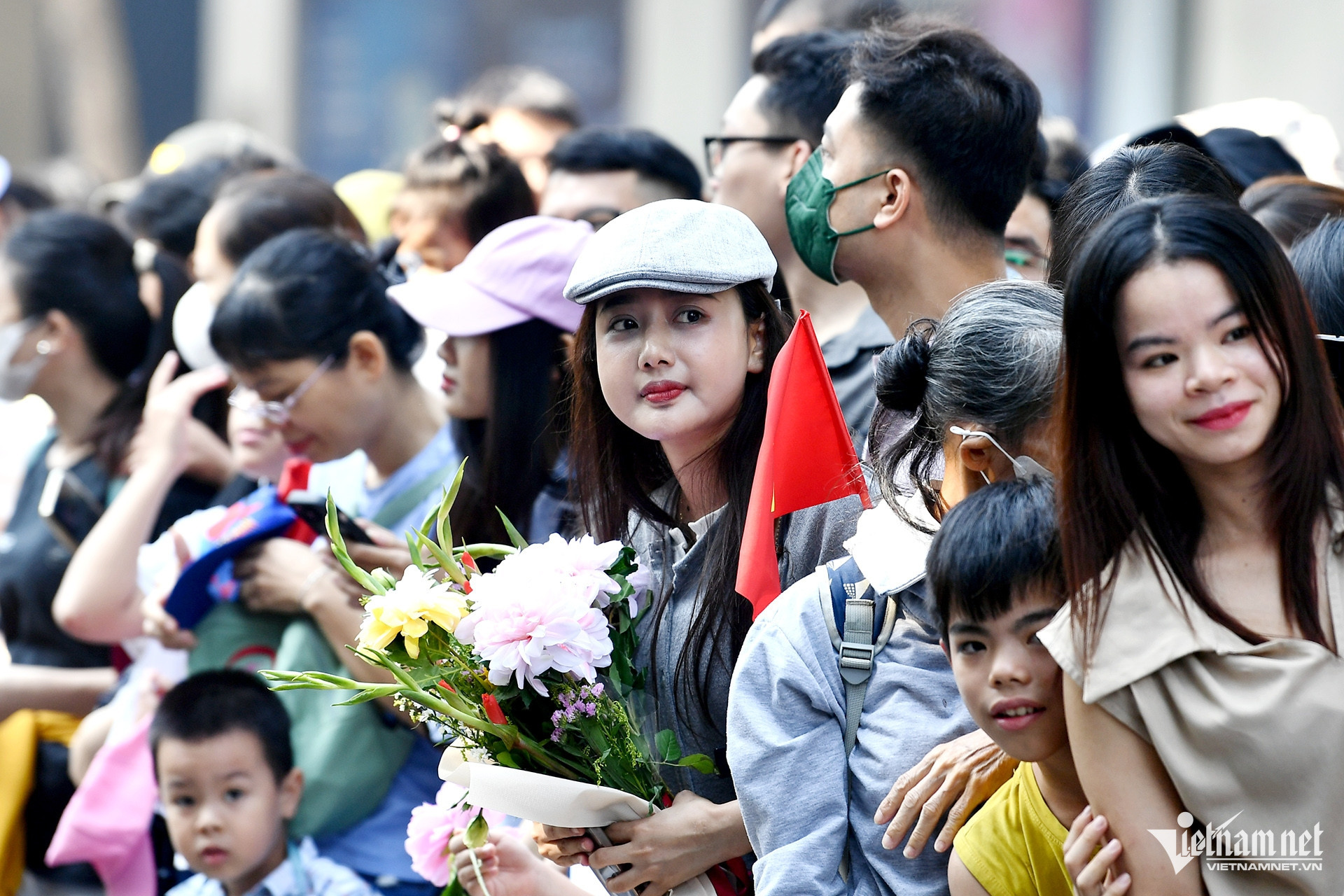
Pham Hai and Hoang Ha